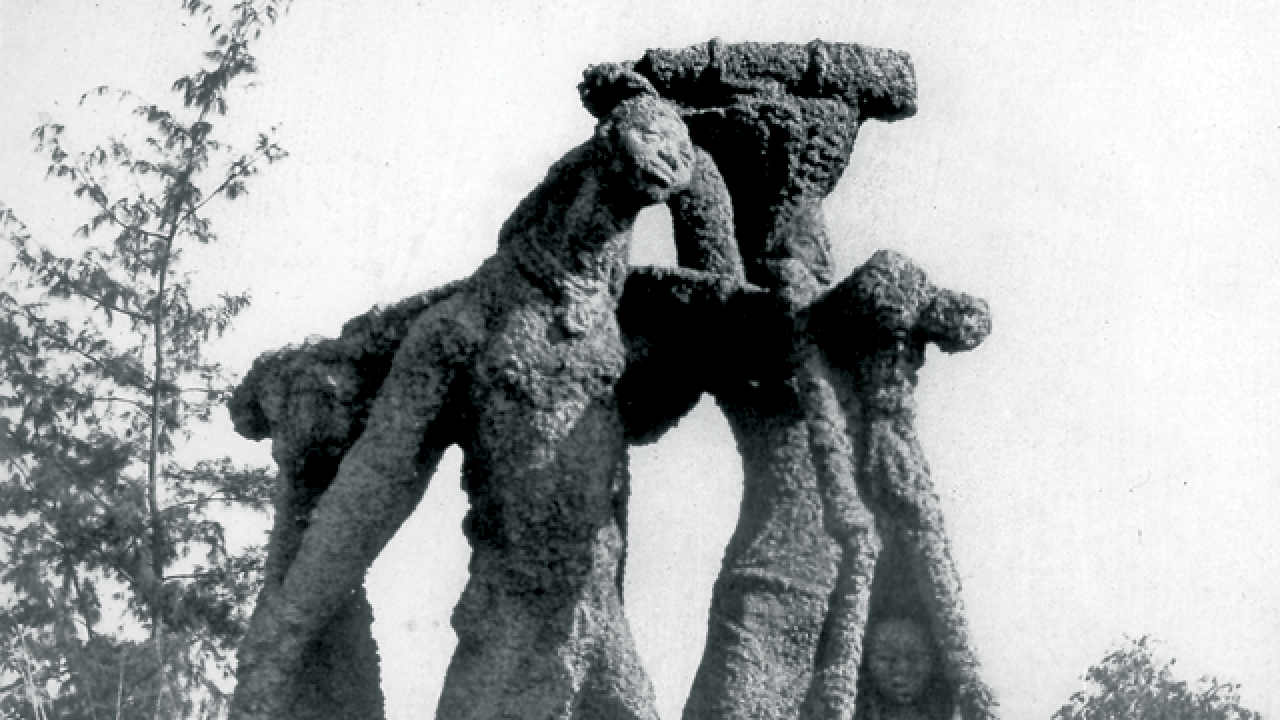SANTHAL FAMILY positions around an Indian sculpture is an exhibition of modern and contemporary art that takes as its point of departure Santhal Family, a work made by Indian artist Ramkinkar Baij in 1938. Statement With its starting point in India, the exhibition is in line with earlier MuHKA-projects such as Alles onder de hemel (All Under Heaven) 2004, which looked at China, Intertidal, 2005, which looked at Vancouver and Moussem, 2007, which looked at Morocco. But unlike these projects, 'SANTHAL FAMILY Positions Around an Indian Sculpture' goes beyond the model of a regional exhibition to focus on the legacy of a single work. Starting with Santhal Family, the exhibition will radiate outwards: first, from the state of Bengal, where the sculpture stands, drawing historic links between left wing politics and the arts; then through the work of contemporary Indian artists familiar with this iconic work; and finally, through the intervention of diasporic and non-Indian artists who will consider the sculpture's importance from afar. The exhibition will consider Santhal Family as a work that links the art histories of different continents and provides an entry point into the complexity of India's cultural and political scene. It will also question how aesthetic gestures can speak beyond their immediate circumstances and how both political and formal elements can coalesce within a single work. Considered to be the first modernist public sculpture in India, Santhal Family combines an interest in the forms of modernism and temple sculpture with a concern for ground level reality. Depicting a family group from the Santhal tribe carrying their possessions with them to a new place of work, it is a portrait of labour that presents the complexity of its subject without heroism or pathos. Little known outside of his native country, Ramkinkar Baij was a revolutionary in his own time, celebrated for his experimental use of materials and for the way that he drew freely on several artistic traditions at once. 'SANTHAL FAMILY: Positions around an Indian Sculpture' not only includes archival material and existing works but 14 artists (including artist groups) were commissioned by the MuHKA to produce new work for the exhibition with several artists travelling to India to see Santhal Family on location. In addition, the museum has taken this opportunity to acquire a number of works from India – including collages by C.K. Rajan (which were recently shown at documenta 12) drawings by K.P. Krishnakumar and terracotta sculptures by Boran Hansda. 'SANTHAL FAMILY' is curated by Grant Watson in collaboration with Suman Gopinath and Anshuman Dasgupta. Watson and Gopinath work together on an ongoing basis and have produced exhibitions with amongst others inIVA (London) Project Art Centre (Dublin) and the Crafts Museum (New Delhi). Anshuman Dasgupta teaches at the Visva-Bharati University in Santiniketan and is a specialist on Ramkinkar Baij. The Polish artist Goshka Macuga has designed a layout for the exhibition that allows its various concepts and histories to become accessible to the public.
